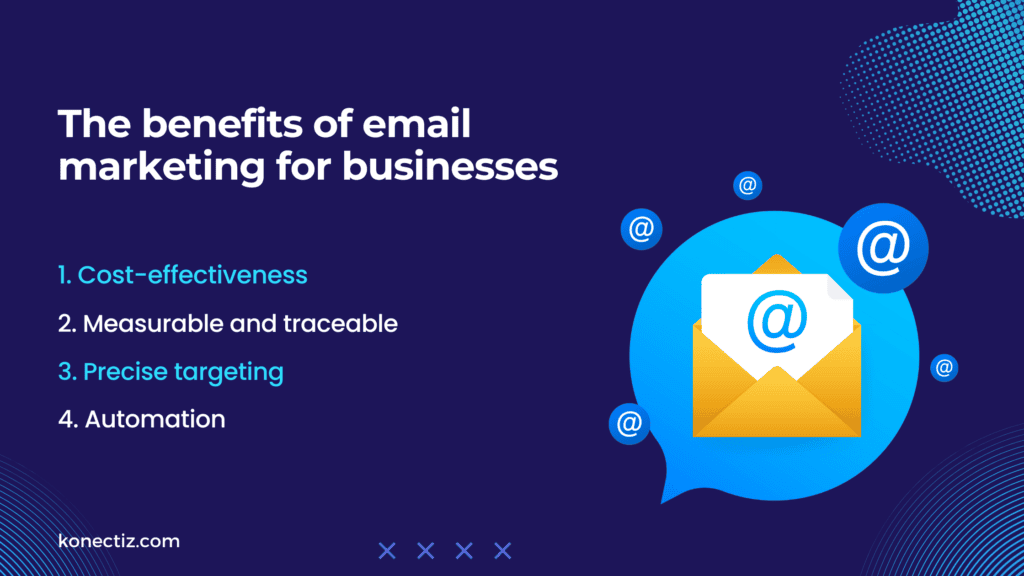Introduction
Are you looking for an effective way to get closer to your customers and build strong, lasting relationships? Look no further thanemail marketing. This proven digital marketing strategy enables you to engage directly with your customers, boosting loyalty and delivering tangible results.
With email marketing, you can send personalized, targeted messages to your contacts, based on their needs, preferences and purchasing behavior. You can personalize offers, provide relevant information and create a customized experience for each recipient.
The advantage of email marketing is its ability to connect you directly with your customers, without going through third-party platforms. You have total control over the content and timing of your communications, enabling you to deliver valuable information to your customers at the right time.
In this article, we’ll explore different email marketing strategies and best practices to help you get closer to your customers and develop their loyalty. Get ready to increase your open rate, engagement and ROI with an effective, targeted approach to email marketing.
The importance of email marketing for customer loyalty
Email marketing is a powerful tool for developing customer loyalty. When you communicate regularly with your customers via personalized e-mails, you show them that you care about them and their needs. This strengthens the emotional bond between your brand and your customers, encouraging them to remain loyal and continue buying your products or services.
What’s more, email marketing keeps you top of mind with your customers. By sending relevant and interesting messages, you keep your brand fresh in their minds, which increases the chances that they’ll think of you when they need what you have to offer. This gives you a competitive edge and enables you to stand out in a saturated market.
Finally, email marketing offers you a valuable opportunity to gather feedback from your customers. By including calls to action in your e-mails, such as surveys or requests for feedback, you can gain valuable information about what your customers think of your company, products or services. This enables you to make continuous improvements and better meet your customers’ needs.
The benefits of email marketing for businesses
Email marketing offers many advantages for companies in all sectors. Here are some of the main benefits:

1. Cost-effectiveness
Compared to other forms of marketing, email marketing is extremely affordable. You don’t need to invest in expensive advertising media or expensive online advertising campaigns. With a reliable email marketing platform, you can reach thousands of potential customers at minimal cost.
2. Measurable and traceable
One of the great advantages of email marketing is its ability to be measured and tracked. With the analytics tools built into most email marketing platforms, you can track email open rates, click-through rates, conversions and much more. This allows you to adjust your strategy according to the results, and get a better return on your investment.
3. Precise targeting
Email marketing lets you precisely target your audience. You can segment your contact list according to various criteria such as age, gender, geographical location, interests and purchasing behavior. This allows you to tailor your messages to the specific needs and preferences of each segment, increasing the chances that your e-mails will be opened, read and converted into sales.
4. Automation
With email marketing, you can automate many tasks, saving you time and effort. You can set up welcome e-mails, post-purchase follow-up sequences, birthday e-mails and much more. This enables you to maintain relationships with your customers proactively, without having to send every e-mail manually.
By putting these advantages to good use, you can leverage email marketing to develop customer loyalty and achieve your business objectives.
E-mail marketing statistics and trends
Before diving into email marketing strategies and best practices, it’s important to understand the importance and impact of this communication method. Here are a few statistics and trends that highlight the potential of email marketing:
- According to a recent study, the average return on investment for email marketing is 3800%. This means that for every euro you spend, you can get a return of 38 euros.
- 81% of marketers say that email marketing is an essential means of strengthening customer loyalty.
- Personalized e-mails have a 10% higher conversion rate than generic e-mails. Customization is therefore essential for better results.
By understanding these statistics and trends, you can see why email marketing is a powerful tool for developing customer loyalty. Let’s move on to the next step: creating an effective email marketing strategy.
Building an e-mail list: sign-up forms and lead magnets
The first step in establishing an effective e-mail marketing strategy is to build a quality e-mail list. This can be achieved by using attractive registration forms and lead magnets. Registration forms should be strategically placed on your website and should be simple to complete, asking only for essential information such as e-mail address.
A lead magnet is free, valuable content that you offer in exchange for your visitors’ e-mail addresses. This could be an e-book, a guide, a checklist or any other content relevant to your target audience. Make sure your lead magnet is attractive and has a high perceived value, to maximize the number of registrations.
Once you’ve built your e-mail list, it’s important to keep it up to date and to respect your contacts’ preferences. Make it easy for them to unsubscribe, and make sure you respect privacy and data protection rules.
Creating captivating e-mail content
Now that you have a quality e-mail list, it’s time to create captivating content for your e-mail marketing campaigns. The key here is to personalize your messages according to your contacts’ needs and preferences.
Start by segmenting your e-mail list according to criteria such as age, gender, interests or purchasing behavior. This will enable you to create more relevant messages and provide each recipient with a personalized experience.
When writing your e-mails, be sure to use a friendly, engaging tone. Avoid overly formal or business-like language, and instead favor a conversational tone that engages your readers. Also use attractive images and clear layouts to make your e-mails more visually appealing.
In every e-mail, be sure to include a clear, motivating call to action. Whether it’s encouraging your readers to buy a product, sign up for an event or share your content, give them a compelling reason to take action.
Email automation and drip campaigns
Once you’ve created your captivating e-mail content, it’s time to automate your e-mail marketing campaigns. Automation lets you send e-mails on a scheduled basis, according to specific triggers or user behavior.
One of the most common forms of e-mail automation is drip campaigns. These campaigns consist of sending a series of pre-programmed e-mails to your contacts, with the aim of guiding them through the purchasing process or informing them about a specific subject.
For example, if a visitor registers on your website to receive an e-book, you can automate a series of e-mails that provide them with additional information on the subject of the e-book, suggest relevant products or services, and remind them to take action.
Email automation lets you save time and energy by sending relevant messages automatically, while delivering a personalized experience to your contacts.
Measuring the success of your email marketing campaigns
To evaluate the effectiveness of your email marketing campaigns, it’s essential to measure results. Here are some important metrics to watch out for:
1. Open rate
The percentage of recipients who open your e-mails. A high open rate indicates that your e-mail subjects are attractive and encourage recipients to open your messages.
2. Click-through rate
This is the percentage of recipients who click on the links included in your e-mails. A high click-through rate indicates that your content is relevant and encourages recipients to engage further with your brand.
3. Conversion rates
This is the percentage of recipients who take a desired action after receiving your e-mails, such as making a purchase or registering for an event. A high conversion rate indicates that your e-mails are effective in encouraging recipients to take action.
Use analytics and tracking tools to measure these metrics and adjust your campaigns accordingly. Test different e-mail subjects, content and calls to action to find out what works best for your audience.
Conclusion: The power of email marketing to develop customer relationships
In conclusion, email marketing is a powerful tool for bringing your customers closer together and developing their loyalty. With personalized, targeted messages, you can deliver a tailored experience to each recipient, strengthening their engagement and relationship with your brand.
By building a quality email list, creating captivating content, automating your campaigns and measuring results, you can maximize the impact of your email marketing and achieve tangible results.
So don’t wait any longer, implement an email marketing strategy now and get closer to your customers to develop their loyalty and boost your business.





